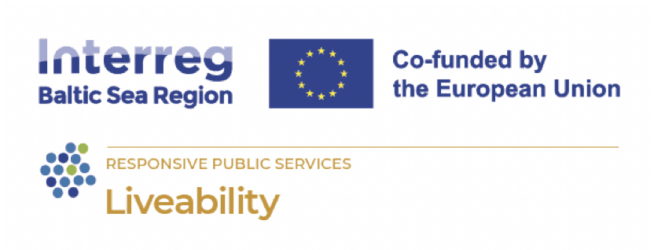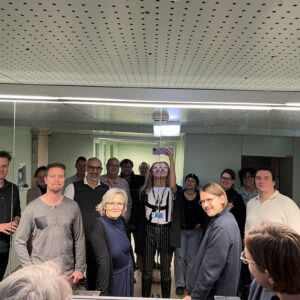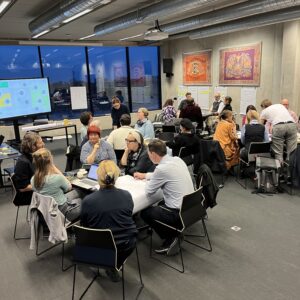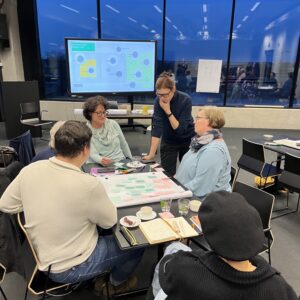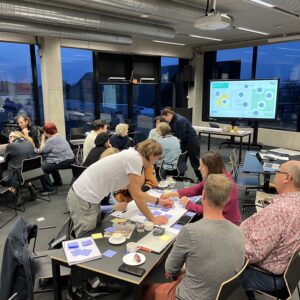
Foto: Erle Nemvalts
EKA Design is participating in a project that introduces innovative ways to engage people and create living environments that meet their needs, making urban spaces more livable and attractive for the public sector. From January 29–31, the Liveability network gathered at EKA to test and develop training modules for the project “Liveability – Designing Public Services for Resilient Neighborhoods.”
Many small and medium-sized cities in the Baltic Sea region face complex social, environmental, and economic challenges, including inequality, climate change, and demographic shifts. Cities need to make changes and undergo a renewal process by designing more livable environments and citizen-friendly services.
“The goal of the Liveability partnership is to equip local authorities with design principles and tools that help solve the complex and interconnected problems of the 21st century. Our aim is to initiate dialogues with leaders to integrate public-interest-driven design into city-wide strategies, while also enabling officials to collaborate with citizens in developing practical neighborhood projects,” explained Andrea Cederquist, the central leader of the project. She further clarified that it is about co-creating a livable city.
At the start of the project, EKA’s role, alongside the Politics for Tomorrow foundation, was to explore the theoretical context of public interest design (PID) and gather input from change-driving officials working in local municipalities across the Baltic Sea region. “At this stage, our EKA team is primarily focused on developing PID training modules,” explained Ruth-Helene Melioranski, the project leader on behalf of EKA, design researcher, and Dean of the Design Faculty. “During the meeting, we received valuable feedback, and we also planned more specific training to further support design efforts and promote pilot projects in partner cities.”
Liveability’s goal is to inspire and train people working in public administration (and beyond) on innovative ways to engage with citizens in creating a livable and attractive urban environment. Using public-interest-driven design (PID) as a methodological framework, the design processes related to urban planning and public services are centered on the public interest and collective well-being. Cities face complex social, environmental, and economic challenges, including social inequality, the effects of climate change, and demographic shifts. However, changes in work and living patterns present opportunities: medium-sized and smaller cities can attract residents and businesses.
To succeed in this transformation process, cities must adopt an integrated and balanced approach based on the environment, a culture of innovation, public service delivery, and social-cultural life, fostering a strong sense of belonging and civic engagement. The Liveability project idea originates from the experiences of the participating medium-sized cities (Kiel, Kolding, Pori, Gdynia, Riga) in addressing these challenges. The shared view is that the roots of a livable city are found in neighborhoods, and local citizens and civic associations should be involved in developing and implementing ideas for future urban life and coexistence. Therefore, cities must become more “approachable,” “public,” and “active” for citizens. This can be achieved by encouraging innovative thinking, out-of-the-box approaches, and participatory methods among city government employees. All of this is encompassed in the concept of “public-interest-driven design,” which means applying user-centered design principles to matters of general interest.
Partners:
- Heinrich-Böll-Foundation Schleswig-Holstein e.V.
- City of Kiel
- Danish Cultural Institute
- Business Kolding
- Municipality of Guldborgsund
- City of Pori
- Riga City Council
- City of Gdynia
- Gdansk University of Technology
- Politics for Tomorrow
- Estonian Academy of Arts
Project Period: January 2023 – December 2025
